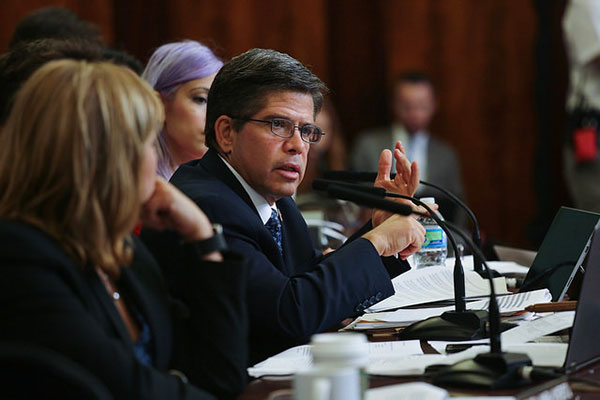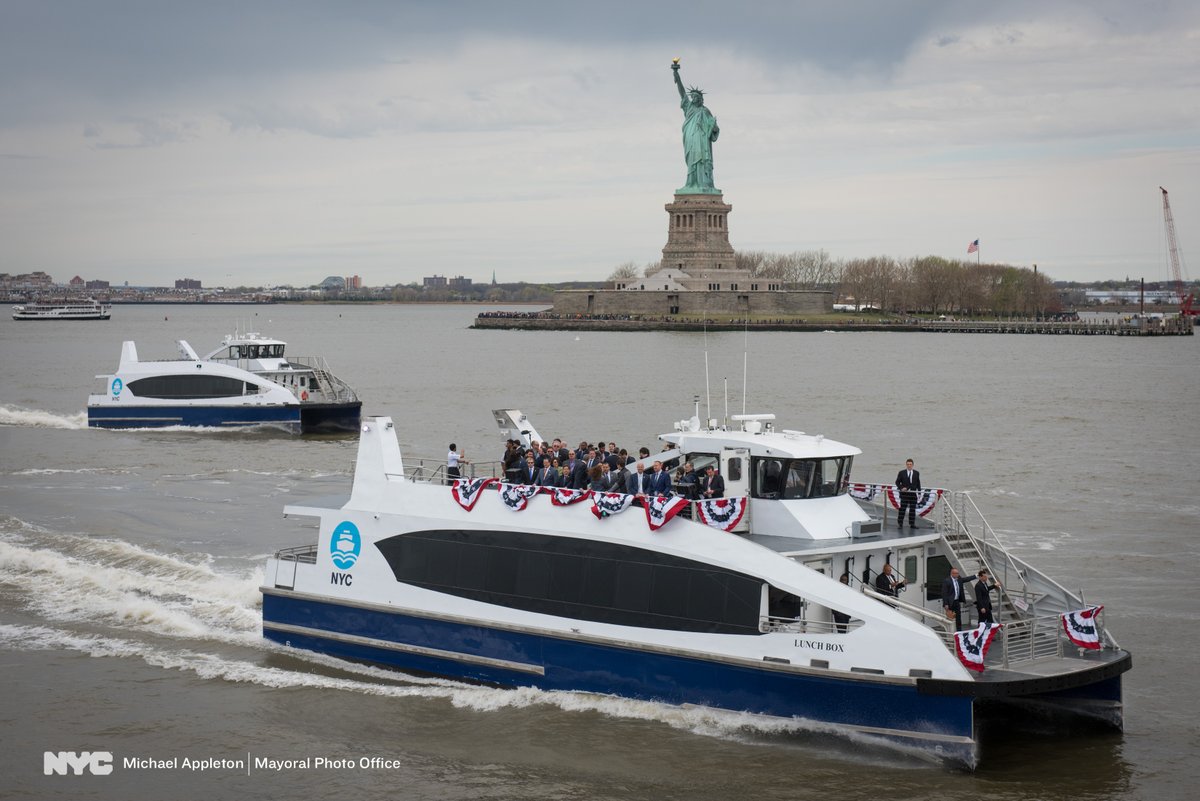Building Political Power for Animals in New York

(image via ESHV)
In one of the most politically divisive times this country has ever seen, there is still one unifying, bipartisan issue that now – more than ever – needs your support: protecting animals from abuse and neglect.
Over 90% of Americans believe that animals deserve protection from abuse and exploitation. Yet today, in contrast to overwhelming public sentiment, basic protections for animals are under attack in this radically altered political landscape. Recent reports are chilling: Congress obliterated restrictions protecting wildlife from cruel and unethical hunting practices in national parks (including shooting wolves from planes and killing hibernating animals in their dens) and the USDA has stripped public access to Animal Welfare Act inspection reports which document cruelty in puppy mills, labs, and circuses.
It is time to push for meaningful change for animals starting with our own communities.
This week’s launch of Empire State Humane Voters (ESHV) is a long-awaited beacon for New York’s animal advocates. As a grassroots advocacy organization, we aim to build political power for animals in New York State — from Buffalo to Long Island. Our mission is to support city and state candidates who will champion protections for animals, lobby for stronger laws to stop animal cruelty, and hold elected officials accountable to humane voters.
What makes ESHV stand out from the pack? Unlike most nonprofits, our 501(c)(4)* status allows us to engage with candidates for elected office. While other animal groups are legally barred from even talking about elections, ESHV can ask candidates tough questions about humane issues and is uniquely positioned to endorse candidates that prioritize animal protection — and vigorously oppose those who don't by mobilizing animal activists and New York’s 3 million pet guardians into a humane voting bloc. ESHV is empowered with the political savvy and animal law expertise to effectuate change for animals in New York.
The battle to achieve legal protections for animals must be fought on the state and local legislative fronts. Unlike a charity with very limited lobbying capabilities, ESHV is empowered to focus on lobbying and political activities in Albany, New York City, and locally throughout the state. From strengthening New York State animal cruelty laws, ending some of the cruelest factory farming practices, protecting pets from being trapped outside in extreme weather, to ending the use of wild animals in circuses, we will ensure that the voices of all animals are heard.
State and local elected officials understand that animal protection is an important issue to constituents and that ESHV is mobilizing public concern for animals through the political process.
“Effective advocacy requires not only educational outreach, but also political organizing,” said City Council Member Helen Rosenthal. “The animal protection movement has done great work educating the public on the plight of animals. Now ESHV is charged with converting that positive public sentiment into law.”
We have a busy year ahead. With seven open City Council seats and active District Attorney races, now is the time to elect candidates that prioritize animal protection. Recruiting, training and building an active volunteer presence in every local district is a top priority. We will focus on teaching animal lovers about grassroots organizing and how to work on electoral campaigns, embedding them into the political fabric of their communities.
“Local government has the power to create a more humane environment for our animals,” said City Council Member Mark Levine, “and we need advocates engaged in the political process to make that a reality.”
Thursday, May 11 marks the official launch of Empire State Humane Voters at the Upper West Side studio of world renowned artist Peter Max. This sold out event brings together a constituency of dedicated animal protection advocates that is more than ready to channel its passion and enthusiasm into an effective political movement.
Join our pack of political animals.
***
Allie Feldman Taylor is the Founder and Executive Director of ESHV. On Twitter @nyvoteshumane. She has three rescued cats: Willa, Waffles, and Feline Dion.
*Status pending May 2017
***
Have an op-ed idea or submission for Gotham Gazette? Email This email address is being protected from spambots. You need JavaScript enabled to view it.
Substandard Housing Is Not Affordable Housing, It's Dangerous Housing

City Council Member Gentile, the author (photo: William Alatriste/City Council)
Over two years ago I stood with Brooklyn Borough President Eric Adams and City Council Member Jumaane Williams on Flatbush Avenue by the ravaged remains of a building consumed by a fatal two-alarm fire. A 23 year-old security guard was killed and 15 others were injured.The cause? Illegal residential conversions.
Partitioning one and two family homes with shoddy construction, faulty wiring, and compromised gas work has become a common practice by predatory landlords. Maximizing profit at the expense of the safety of inhabitants has led to today’s proliferation of illegal home conversions. Just last summer in the Dyker Heights portion of my Brooklyn district, 18 adults and 13 children were vacated from an illegally subdivided home riddled with hazardous conditions such as insufficient egress and extreme overcrowding.
The dominoes of peril continue to fall from there. Our city’s first responders encounter immediate danger and confusion when entering these premises during emergencies. Heightening the already threatening situation, firefighters must navigate their way through a disjointed maze of subdivided units losing people in need of rescue along the way.
Considering the deterioration to a neighborhood’s quality of life is important to qualify in assessing the effects of illegal conversions. There is direct correlation between 311 complaints of illegal conversions to overcrowded elementary schools as evidence by this cross-section map from Brooklyn Daily. In addition to severely overcrowded schools, public transportation systems are overburdened, sewage systems overflow, and other essential city services are drained thin.
Very few neighborhoods across the five boroughs are spared from the inhumane predatory scheme of illegally subdividing homes. In 2016, there were 18,049 complaints of illegal residential conversions, an average of almost 50 per day. To put this in perspective, there have been more complaints of illegal conversions than of graffiti, smoking, and illegal fireworks combined!
My “Aggravated Illegal Conversions” bill, Intro. 1218-A, introduced jointly with Borough President Adams, Council Member Williams, and Council Member Grodenchik, will make this unethical practice an unlawful one. We will codify a year’s long rallying cry, “substandard housing is not affordable housing.” Setting this precedent is vitally important as our city rids itself of modern day tenement housing for stable affordable housing.
Focusing on the most egregious purveyors of illegal conversions, my bill establishes a $15,000 penalty strictly on the unscrupulous owner for each illegally partitioned dwelling unit that is three or more units above the Certificate of Occupancy. So if a two family home is found to have been illegally converted to five illegal residences, a $45,000 fine will be imposed on the person or persons responsible for victimizing tenants and endangering human life. To ensure rectification and payment of the violation, the fine constitutes a lien on the property. If unpaid for one year, the lien can be sold by the city.
Let me be clear, penalizing aggravated illegal conversions will not impede the efforts to legalize and standardize basement apartments, grandma’s basement, or granny flats. Instead Intro. 1218-A will root out those profiteering landlords who gut and partition entire buildings for maximum profit with no concern for health or safety.
The conditions inside these Aggravated Illegal Conversions may be life threatening and possibly immediately hazardous. If the circumstances force the Department of Buildings (DOB) to issue a vacate order, residents can apply for transitional housing services that are facilitated by the city’s Department of Housing Preservation and Development (HPD) and the American Red Cross. My office has been in discussion with the Mayor’s Office to establish a Memorandum of Understanding so these fines would be purposed towards assisting the residents’ relocation from a modern day tenement to safer living arrangements.
Finally, in the Dyker Heights case, DOB was fortunately able to gain entry to the partitioned home and prevent a catastrophe. However, obtaining access is a tall hurdle to jump over and often an impediment for building inspectors. Intro. 1218-A will institutionalize the process of obtaining an access warrant to an alleged illegal subdivision. After two unsuccessful attempts to gain entry, DOB will request the Law Department apply for an access warrant. Once granted by a judge, inspectors will finally be equipped with the necessary tools to inspect a property and act accordingly based on the violations.
All in all, this bill will serve as strong deterrents on the front end, and if needed, strong enforcement tools on the back end to combat aggravated illegal residential conversions. Almost half of my colleagues in the City Council have already attached their names to Intro. 1218-A and I look forward to guiding it into law.
***
Vincent Gentile is a New York City Council Member representing the neighborhoods of Bay Ridge, Dyker Heights, Bensonhurst, and Bath Beach in the 43rd District in Brooklyn.
***
Have an op-ed idea or submission for Gotham Gazette? Email This email address is being protected from spambots. You need JavaScript enabled to view it.
The City Ferry Revolution and Its Many Advantages

NYC Ferry (photo: Michael Appleton/Mayor's Office)
Already a holiday, May 1 will henceforth be remembered by hundreds of thousands of people for the launch NYC Ferry, a new, state-of-the-art waterway transit service. New Yorkers are grateful. “You kept your word!” overjoyed Queens residents exclaimed to Mayor de Blasio as he launched NYC Ferry with the inaugural run from the Rockaways to Wall Street.
But while we celebrate the ferry revolution of May 1, please do not forget October 30, December 30, August 14, and September 11: the anniversaries of Hurricane Sandy (2012), the transit strike (2005), the blackout (2003), and, of course, the tragic attacks of 2001. These dates remind us that we are surrounded by water, and more often than we care to think, the vulnerable, land-based transit systems we all depend on break down.
When that happens, our best bet can be a boat ride.
As we celebrate the birth of the city's first new transit system in decades, easing commuting burdens for Rockaway residents now and the residents of Soundview, Red Hook, Astoria, and many others to come, let’s acknowledge that NYC Ferry also delivers a huge bonus in transit resiliency. A new mode of transportation supplying relief to transit-starved neighborhoods is wonderful when times are good; a lifeline when times are bad. And times will be bad. Climate change is a reality; storms like Sandy pose an increasing threat sure to disrupt our rail and surface transit systems again. Our subways, bridges, and tunnels remain a target for those who intend to do us harm.
With a fare of $2.75 pegged to the cost of a subway ride, the new ferries are affordable. But the system is also a bargain for taxpayers. The projected operating subsidies pale in comparison to those that support express bus or commuter rail service. And the capital cost of creating the system is a rounding error compared to other transit–no tunnels to dig, roads to pave, nor tracks to lay. Beyond that, our government’s ability to finance and build major infrastructure is questionable. The fragile condition of our trans-Hudson rail tunnels and the equally fragile political consensus on how to fund Amtrak’s desperately needed improvements demonstrates that we are far from essential infrastructure solutions, despite talk in Washington.
Rediscovering the benefits of ferries is proof of the old song: everything old is new again. Before New York’s bridges and tunnels were built, the local waterways were thronged with ferries. As car ownership swelled, waterborne transit declined until only the Staten Island Ferry was left. Thirty years ago, NY Waterway launched routes connecting New Jersey shorefront communities to Manhattan, soon followed by New York Water Taxi and Seastreak, and the modern ferry renaissance began.
That renaissance is now a revolution, with NYC Ferry doubling the number of neighborhoods served by maritime transit, and other waterfront communities from Coney Island to Throgs Neck to Staten Island’s south shore demanding service.
Back to the calendar. There’s one more date to bear in mind: the day to be determined in 2018 when L train service shuts down for 18 months of repairs. Ferries will be part of a vital multi-modal solution. The city’s greatest resource, our waterways, are beautiful blue highways, blissfully devoid of gridlock, while offering express trips and boundless views. Whether you are a shore-dweller enjoying an easier commute or a landlubber on a weekend water excursion, we can all rest a little easier knowing that when the next transit crisis happens, we can turn to the blue highways and get on a boat.
***
Roland Lewis is president and CEO of Waterfront Alliance. On Twitter @OurWaterfront.
***
Have an op-ed idea or submission for Gotham Gazette? Email This email address is being protected from spambots. You need JavaScript enabled to view it.




